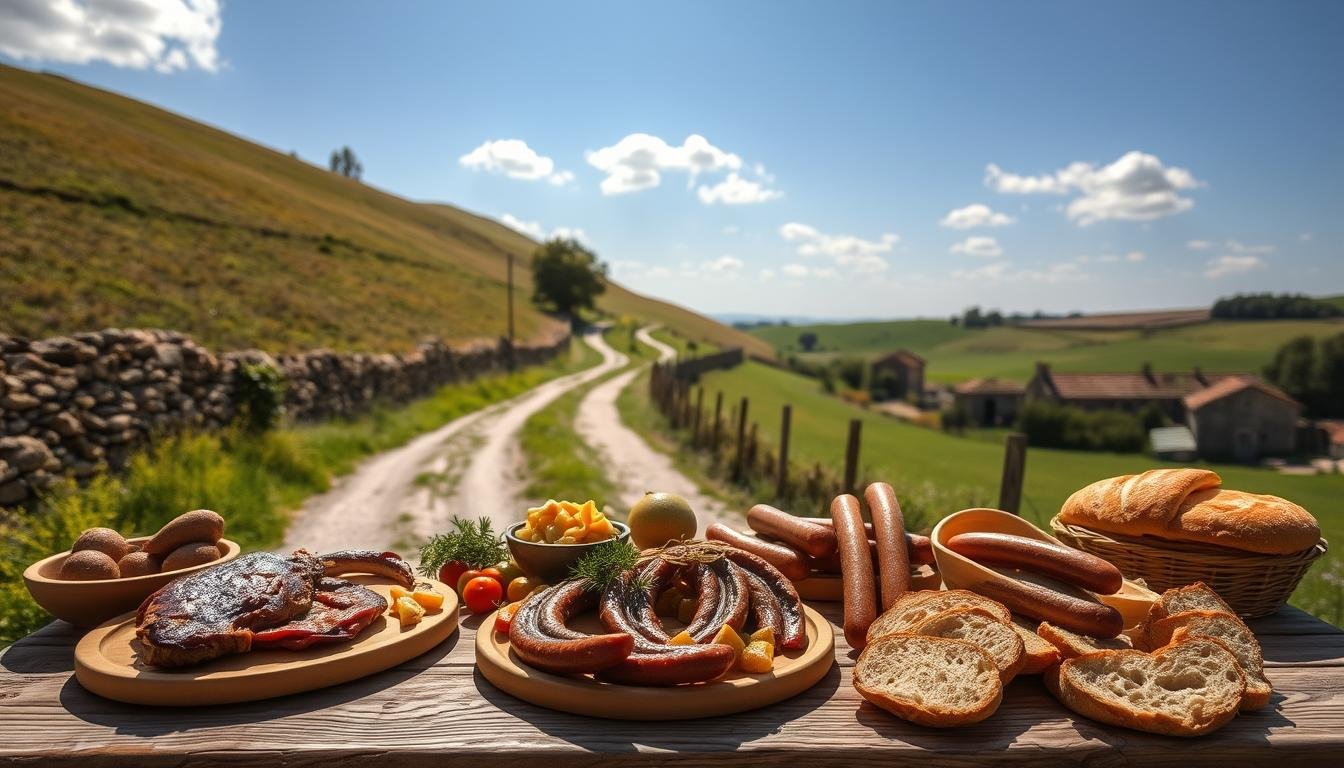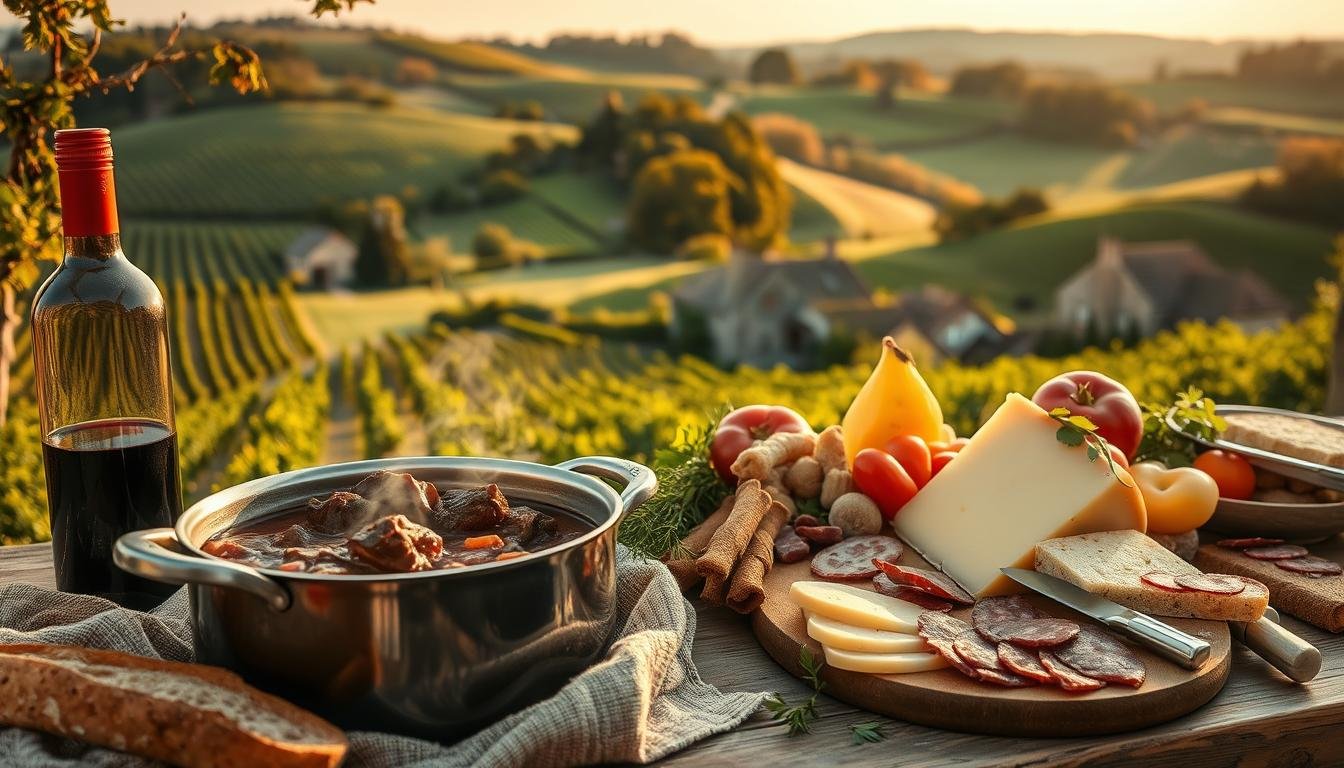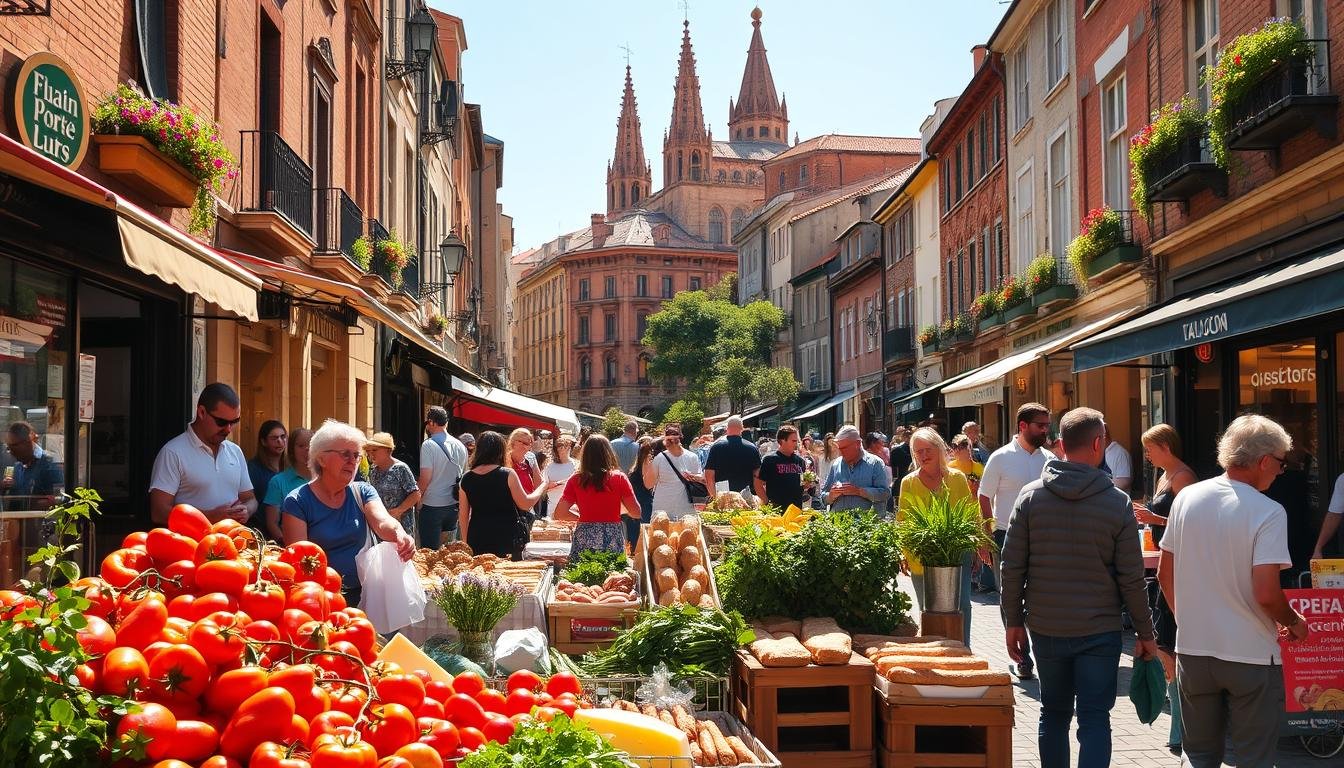My first taste of Gascony was on a misty autumn morning in southwest France. The sound of duck skin crackling, the smell of wild mushrooms, and the taste of Madiran wine enveloped me. It was more than a meal—it was an invitation to explore.
Gascony is where French food meets rustic traditions. Every dish tells a story of the land and seasons. It’s not just about eating; it’s about connecting with the earth.
Imagine walking through markets in Agen, where duck confit and prunes are piled high. The region is full of contrasts: hearty cassoulet cooked over fires and fine dishes in Michelin-starred restaurants. This tour shows how simple dishes became part of French cuisine.
My adventure started with a terrine de canard that melted in my mouth. It sparked a deep interest in southwest France’s food. Gascony’s secrets are found in its humble places: farmhouse kitchens and vineyards. These are the flavors I’ll share, showing why Gascony is France’s culinary treasure.
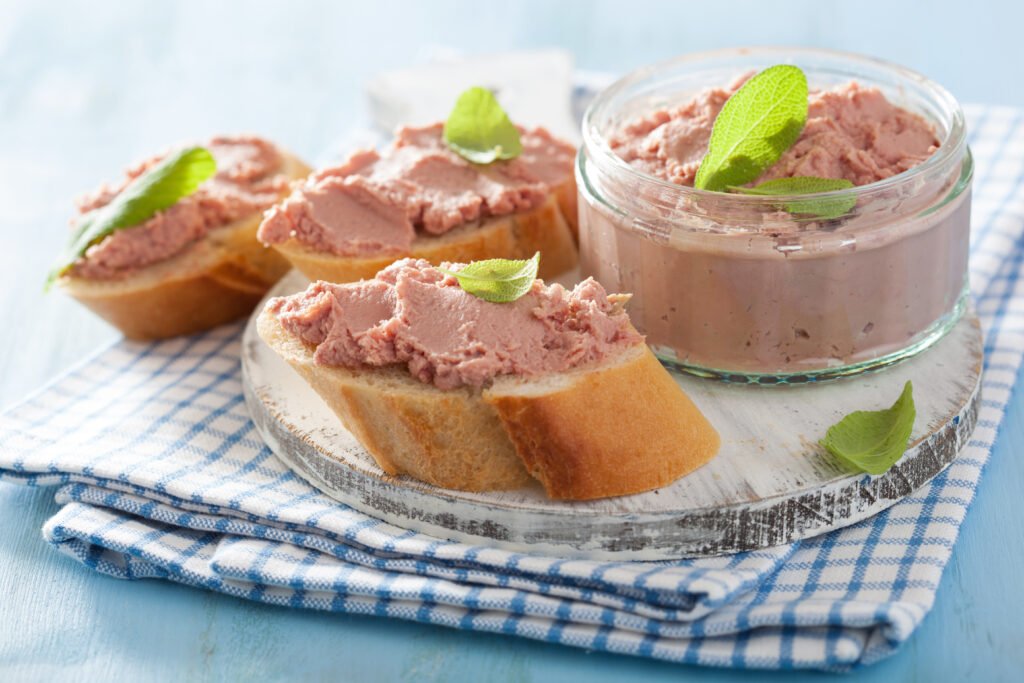
Key Takeaways
- Gascony’s food is a mix of rustic traditions and French fine dining.
- Dishes like duck confit and cassoulet show the region’s culinary journey.
- Armagnac, the local spirit, connects Gascony to its rich heritage.
- Markets in villages like Lectoure or Eauze are the heart of Gascony’s food scene.
- Ingredients like foie gras and prunes show the deep cultural roots of southwest France’s cuisine.
The Soul of Southwest France: Gascony’s Culinary Heritage
The landscapes of Gascony whisper stories of flavors forged over centuries. Every ingredient here tells a tale of resilience and resourcefulness. My journey began in the soil. Gascony culinary heritage thrives on ingredients born from its sun-drenched plains.
Duck fat simmered in clay pots, prunes ripened under clear skies, and beans that outlasted medieval sieges. These are the soul of cassoulet.
A Rich History Shaped by Agriculture and Tradition
Roman vineyards and medieval salt routes laid the groundwork for this edible tapestry. Peasants-turned-soldiers like d’Artagnan carried duck confit into battles. This shows that survival and pleasure can go hand in hand.
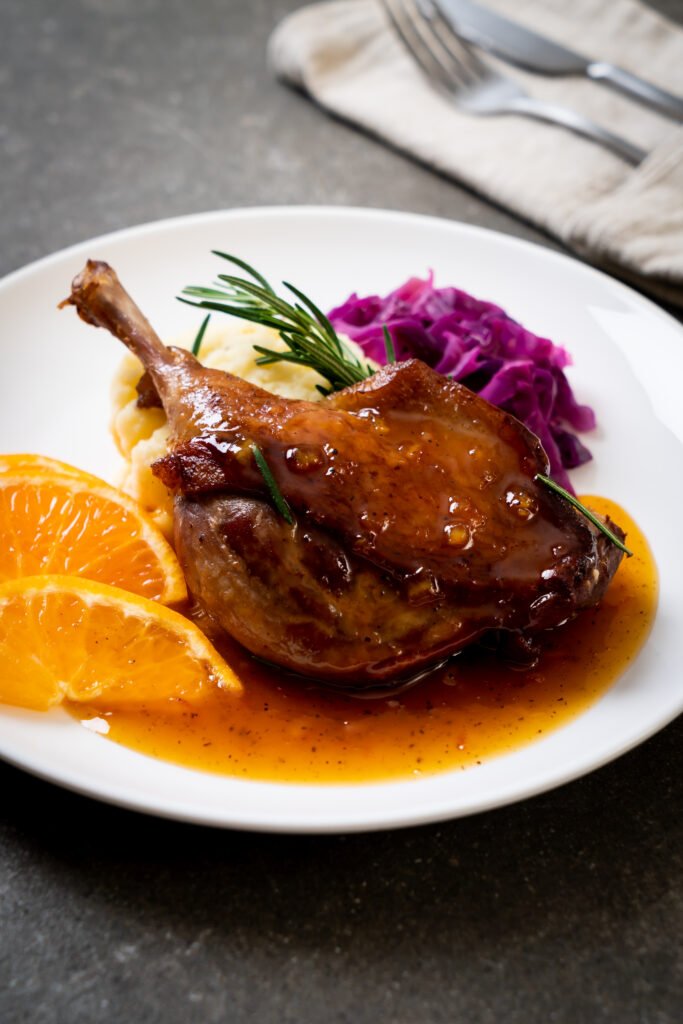
Farmers here follow lunar cycles to cure meats and ferment wines. These practices predate modern calendars. The region’s isolation preserved these rituals, guarding them from industrial kitchens.
Why Gascony Remains France’s Best-Kept Culinary Secret
While Paris dazzles with Michelin stars, Gascony hums with a quieter magic. Here, chefs honor traditional Gascon food that outsiders rarely encounter. The absence of overcrowded tourist trails means you’ll find southwest France gastronomy unblemished by commercialization.
Visit a truffle market in Auch, and watch hunters’ dogs sniff out black diamonds under oak trees untouched by GPS.
My First Encounter with Gascon Cuisine
At a Dordogne farmhouse, an 80-year-old authentic French cuisine redefined my palate. Mme. Loubière’s duck confit, slow-cooked for 18 hours, melted like a memory. “This is not cooking,” she said, “it’s conversation between fire and patience.”
Her words echoed as I tasted her walnut-and-pigeon salad. This dish was so vivid it felt like stepping into a Monet painting. That meal became my pilgrimage’s north star.
“To eat Gascony is to taste time itself,” shared a local producer during a visit to a family-owned Armagnac cellar. “We don’t innovate—we conserve.”
Every ingredient here feels like a covenant between land and lineage. As I sipped her aged Armagnac, I realized Gascony’s secret isn’t hidden—it’s simply waiting for those willing to listen.
Culinary Tour of Gascony France: Why It Deserves Your Bucket List
Lyon and Burgundy are famous for their food, but Gascony is special. It’s untouched by too many tourists. My first truffle hunt showed me a world where the earthy smell of black truffles fills the air. Here, the best culinary tours in France happen in family places, not fancy tasting rooms.
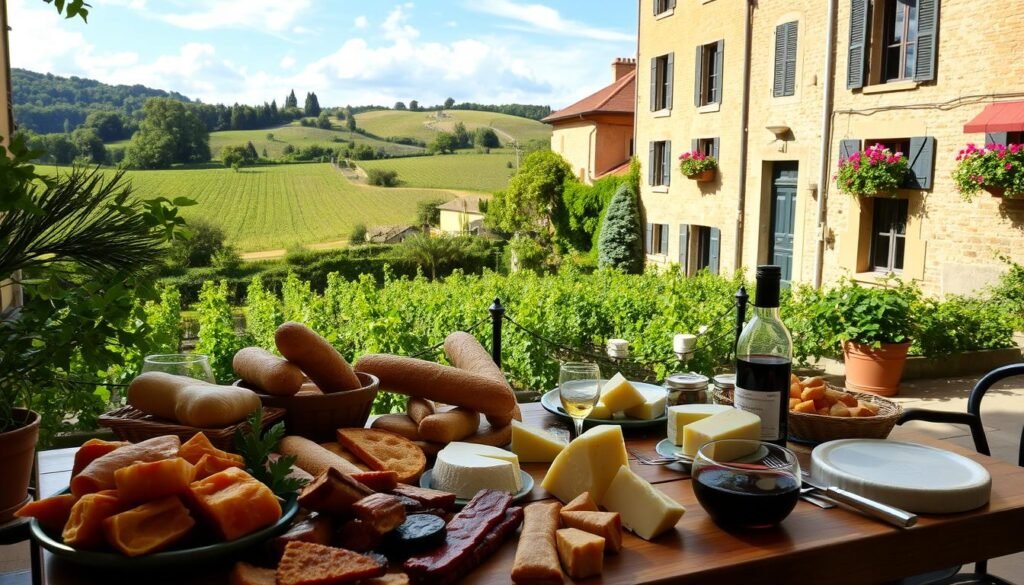
Gascony is more than you think: it has lots of artisan producers but prices are low. Join French cooking tours with chefs who learned from the best. They say tradition is alive in every confit de canard.
- Rustic farm-to-table meals beside oak forests
- Micellaneous markets where farmers barter
- Michelin-starred creativity with Gascony’s prunes d’Entrecasteaux
Every season brings new adventures, like foraging for asparagus or grape stomping. It’s not just a gastronomic tour Gascony experience. It’s a deep connection with the land. When truffle hunters say “la terre parle” (the earth speaks), you’ll see why Gascony’s food vacation is more than just eating.
The Essence of Gascon Cuisine: Duck, Foie Gras, and Beyond
In Gascony’s kitchens, patience and passion are key. Each dish shares a story of land and family. From the crispy duck skin to the slow-cooked cassoulet, every bite is a tale.
The Sacred Trinity: Duck Confit, Foie Gras, and Cassoulet
Gascon duck recipes are simple yet artistic. Duck confit’s skin crackles like autumn leaves. Its meat is buttery and rich.
In family kitchens, grandmothers layer flavors. Duck legs marinate in garlic and thyme, then slow-cook until glistening. Foie gras, whether terrine or seared, is velvety and lingers on the tongue.
Traditional cassoulet varies by village, showing regional pride. Its crusty top hides sausage, pork, and duck.
Hearty Peasant Dishes That Define the Region

Gascony’s dishes come from necessity. Garbure, a thick cabbage and meat soup, warms in winter. Poule au pot, a chicken feast, turns one chicken into a feast of broth, meat, and veggies.
Tourin à l’ail, a green garlic soup, shows sustenance can be sublime. It’s made with care.
The Unsung Vegetable Stars of Gascon Cooking
In Gascon cooking, vegetables shine. Spring asparagus, roasted with walnut oil, tastes like sunshine. Summer tomatoes burst in salads, and autumn pumpkins melt in tarts.
Garlic braids perfume kitchens with their scent. These vegetables, grown in sun-drenched fields, are the stars of simple dishes.
Armagnac: Gascony’s Liquid Gold
My first taste of Armagnac brandy tasting was amazing. The amber liquid, poured slowly, smelled like sun-dried figs and toasted oak. Each swirl showed different flavors—vanilla, leather, and a hint of black pepper.
This shows that Gascony’s spirit is as complex as its landscapes. Unlike Cognac, artisanal Armagnac is made in small batches. Its single distillation keeps its raw, earthy taste, just like the land.
Armagnac comes from three areas in Gascony: Bas-Armagnac, Ténarèze, and Haut-Armagnac. Each area has its own grape type. Visit French brandy tours along the Route des Armagnacs to see how it’s made.
At old chais, producers like Château de Labastide or Domaine Darroze tell stories of patience. They age their brandy for decades, sometimes in family cellars. “The oak speaks,” one vigneron said, “but only if you let the spirit breathe.”
“Aging is a dialogue between wood and wine,” said one master distiller, brushing dust from a 1945 bottle.
Don’t just pair Armagnac with cheese. Gascons love to flambé duck livers with it or drizzle it into croustade aux pommes. For travelers, visiting family estates offers private tastings. It’s a chance to taste heritage, as wild and welcoming as the region itself.
Market Day Magic: Where Gastronomy Begins
Before dawn, Gascony’s villages come alive. The Gascony farmers markets are at the heart of this. Here, farmers, artisans, and cooks meet. These French food markets are more than places to buy food; they’re where tradition comes alive.
The smell of truffle-laced duck fat fills the air. People chat in Occitan dialect. Every Gascon market days show the land’s rhythm, from seasonal produce Gascony to spring asparagus.
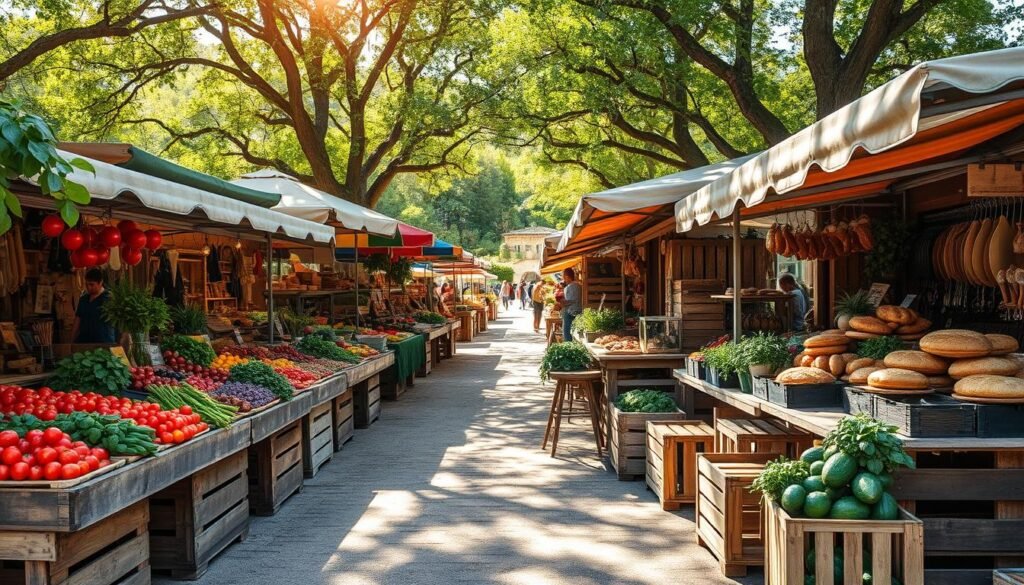
My favorite markets feel like a journey. Start with Samatan on Monday mornings, where ducks and foie gras meet. Auch’s Thursday fills medieval streets with life, and Fleurance’s Tuesday dazzles with colorful cheeses. Each market has its own beat.
Condom’s Wednesday is for sun-ripened tomatoes, and Eauze’s Thursday for wild mushrooms. These markets are the lifeblood of Gascon cuisine.
Five Must-Visit Markets in Gascony
- Samatan: Dawn’s first light reveals crates of foie gras and the clatter of live ducks (Mondays).
- Auch: Wander beneath plane trees as vendors hawk duck confit and local Armagnac (Thursdays).
- Fleurance: A feast for the eyes—charcuterie, prunes, and cheeses under the arcades (Tuesdays).
- Condom: Bursting with tomatoes, garlic braids, and the tang of green beans (Wednesdays).
- Eauze: Smells of truffles and persimmons in a 13th-century square (Thursdays).
The Art of Haggling with Gascon Producers
“Un peu de respect pour le métier, et on discute,” said Madame Lefèvre, the prune-jam queen of Condom. To navigate Gascon market days, start with a greeting. Then, ask about their harvest. Haggling is a dance.
Compliment their foie gras, then name a price. Trust builds over time. My first try at Samatan’s poultry stalls was a comedy, but I got a duck leg for half price.
Seasonal Treasures: What to Look for When
- Spring: Forage for wild asparagus and strawberries, fresh at Auch’s stalls.
- Summer: Feast your eyes on melons split open to reveal honeyed flesh (ask for “melons de Cévennes”).
- Autumn: Mushrooms like cèpes and walnuts fresh from family orchards.
- Winter: Truffles shaved over foie gras terrines, and chestnuts roasted to perfection.
These markets are where Gascony’s soul is laid bare. To miss them is to skip the first course of its feast.
From Farm to Table: Meeting Gascony’s Passionate Producers
Every plate of duck confit tells a story of Gascon food producers’ hard work. My adventure started at Domaine du Mas d’Aubrac. There, the Laffitte family raises Noir de Bigorre pigs on open pastures. Their pigs eat acorns like their ancestors, keeping a tradition alive against modern trends.
- Witness duck gavage at family-run farms in the Gers Valley
- Sample walnut oil pressed daily at Château de Vicdessos
- Explore Fromagerie des Pyrénées’ aging cellars
“The pig knows its name before it knows its purpose,” said Jean Laffitte, embodying the meet the makers France ethos. “Our pork isn’t just meat—it’s a conversation with the land.”
| Producer | Specialty | Visit Season |
|---|---|---|
| Laffitte Ferme | Noir de Bigorre pork | Year-round |
| Domaine du Mas d’Aubrac | Artisanal duck products | Apr–Nov |
| La Maison des Noix | Walnut oils | Oct–Dec harvest |
Artisanal French farming is alive and well in Gascony, despite challenges. At Château de Vicdessos, I saw walnuts turned into oil with 19th-century presses. The owner, her hands covered in walnut husks, said, “We bend but don’t break traditions.” These producers fight EU rules to keep their heritage methods alive.
Book guided tours to visit Gascony farms. For custom itineraries, reach out to our partners at Epicurean Escape. Arrive early for gavage demos or join the walnut harvest in autumn.
These experiences show food as a living piece of history. The taste of curing duck skin and the smell of aging cheese are unforgettable. They redefine what Gascon cuisine is all about.
The Michelin Stars and Hidden Gems of Gascon Dining
Gascony’s food scene is a mix of fancy Michelin stars and simple farm-to-table dishes. From top Gascon restaurants to hidden ferme-auberges, this area shows that real food beats fancy looks. For those wanting to dive deep, check out Italy’s culinary spots [here for inspiration.
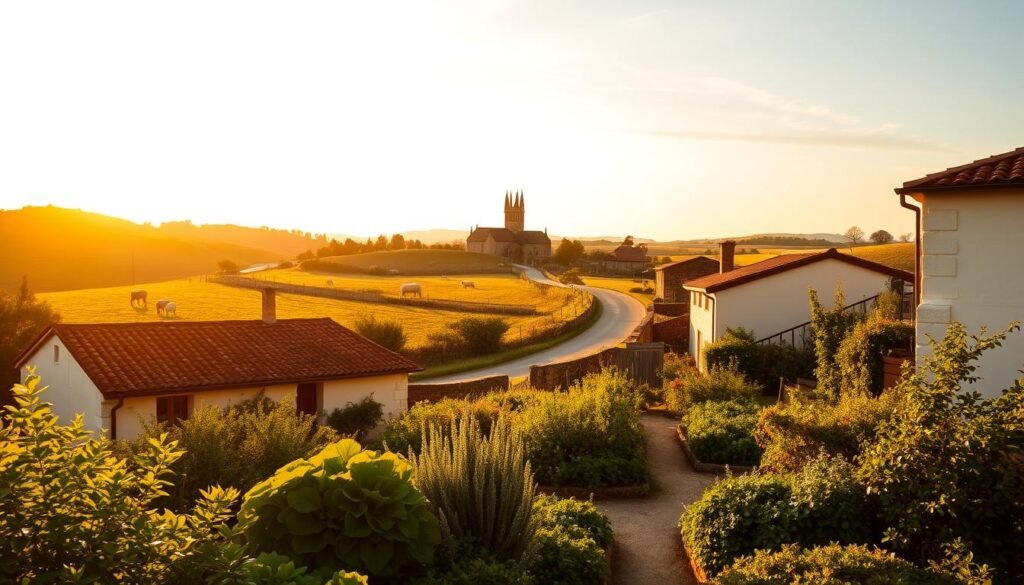
Worth the Splurge: Michelin-Recognized Establishments
La Table des Cordeliers in Condom offers a twist on Gascon dishes. Try their duck confit with wildflower honey or foie gras with fig mostarda. At Les Prés d’Eugénie, Michel Guérard turns duck leg into a work of art. These places mix new ideas with old traditions.
Roadside Revelations: Unpretentious Eateries
Gascony’s best spots are often right by the road. A truck stop near Nogaro serves amazing garbure soup. To find these gems, look for:
- Crowded parking lots with local cars
- Menus written in chalkboard
- Cooks in aprons and checkered shirts
The family-runCafé de la Garein Eauze is a perfect example. It offers charcuterie from nearby farms.
The Joy of Long, Leisurely Lunches
Gascon lunches are like a slow-motion show. They start with walnut-crusted foie gras and end with Armagnac. Don’t forget to book at Michelin-starred places, but crêperies near vineyards welcome walk-ins. Even vegetarians get creative, like chestnut-stuffed pheasant at La Table des Cordeliers. It’s all about enjoying food as a cultural tradition.
Beyond Food: Pairing Your Culinary Adventure with Cultural Experiences
Gascony invites you to enjoy its flavors and stories. Start in Auch, where the Gothic cathedral meets a lunch of confit de canard. This shows how Gascon traditions are in every bite.
Walk the cobblestones of Marciac, where jazz festivals meet ancient pilgrim paths. These paths once carried spices and stories across Europe.
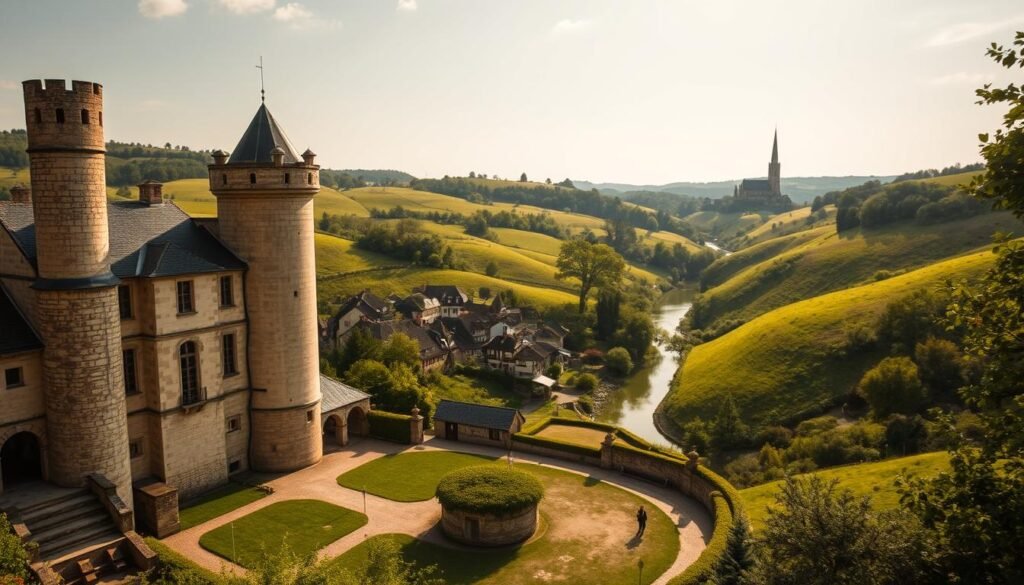
Visit the Cistercian Abbey of Flaran, where monks once grew vineyards. Today, their wines are a testament to their work. The fortified village of Lectoure offers medieval charm and a cheese tasting. Don’t miss Lupiac’s d’Artagnan museum, where muskets and plumed hats show the boldness of Gascon cuisine.
- Stroll through Montréal-du-Gers, where half-timbered houses frame truffle markets
- Join autumn’s Fête de la Truffe in Concours or spring’s cherry blossom walks in Lauzun-L’Aubespine
- Trace Roman ruins near Lectoure, where vineyards thrive on ancient terraces
Gascon traditions shine in festivals like Tempo Latino and the Course Landaise. Enjoy foraging for wild fennel or watching foie gras artisans. For a mix of culture and cuisine, check out Epicurean Escape’s curated journeys.
“A meal without history is just food,” said a winemaker in Fronton. “Here, every ingredient carries a story.”
Start mornings with Romanesque chapels or the Jardins de la Villa Primaveris gardens. Afternoon truffle hunting or vineyard aperitifs await. Gascony’s magic is in this balance—where ancient stones whisper recipes and vineyard walks lead to tables where heritage becomes taste.
Seasonal Considerations: When to Plan Your Gascon Gastronomic Journey
Planning your trip to Gascony is all about timing. Each season brings its own unique flavors and experiences. From the golden harvests of autumn to the lively festivals of summer, there’s always something to enjoy.
| Season | Highlights | Best Activities |
|---|---|---|
| Autumn | Grape harvests, truffle hunting | Join vendanges or taste new wine releases |
| Winter | Truffle markets, holiday feasts | Shop at Lalbenque’s January markets |
| Spring | Wild asparagus, lamb festivals | Attend blessing of new wine ceremonies |
| Summer | Garlic festivals, jazz-fueled tastings | Explore night markets under starry skies |
Autumn’s Harvest Bounty
October is the peak of Gascon harvest season. Forests are full of cèpes, and vineyards are bursting with grapes. I remember helping at a Côtes de Gascogne vineyard, pressing grapes and tasting the wine straight from the barrel. It’s a great time for agritourism, but book early.
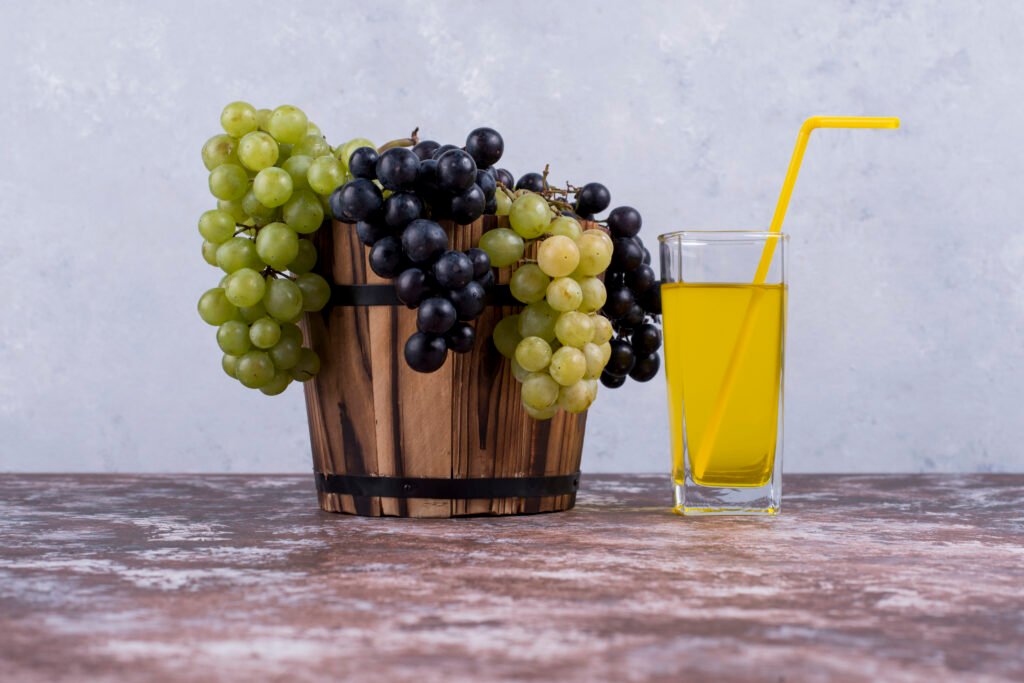
Winter’s Rich Comfort
January brings truffle markets to Lalbenque, attracting many visitors. The cold weather also means pain d’épices and warm réveillon suppers. For the best winter visit, aim for late November to January.
Spring’s Awakening
March markets feature asparagus and lamb. The weather is mild, perfect for vineyard tours. Don’t miss the blessing of new wine, a tradition shared by many regions.
Summer’s Festival Frenzy
July’s garlic festival in Beaumont-de-Lomagne and August’s jazz in Marciac are highlights of summer. Nights are filled with outdoor dinners, but August’s heat means early starts.
Crafting Your Perfect Gascon Itinerary: Regions and Routes
Gascony is known for its culinary delights, spread across areas like the Gers valley and the Landes forests. When planning Gascony trip, think about its varied landscapes. From the bright vineyards of Bas-Armagnac to the old bastide towns, each place has its charm. My travels showed that being flexible makes your trip unforgettable.
- Armagnac Trail: Explore the Gers region France’s famous spirit. Visit distilleries like Château de Laubadère. Enjoy meals at chambres d’hôtes. Drive between villages, trying duck confit at auberges.
- Market Lover’s Route: Go to Condom’s market on Saturdays and Lectoure’s on Thursdays. Try fig jam and explore medieval streets. Marciac is famous for jazz and foie gras.
- Pastoral Paths: Stay at Laubadère’s farmhouse and learn truffle hunting. A 2-hour loop reveals hidden spots. Find a chapel with old frescoes or a farm stand with honeyed pears.
Renting a car is key to seeing Gascony’s hidden spots. Stay in a bastide town like Lectoure for a few days. Then, explore more. Autumn offers vineyard views, while spring is for truffle hunts. But always be ready for surprises.
“The best routes are those that let the land guide you,” said a vigneron in the Gers, handing me a glass of young Armagnac. “Hurry slows here.”
Bringing Gascony Home: Souvenirs and Techniques for Your Kitchen
Carrying the essence of Gascony home is more than just recipes. It’s about bringing its spirit into your daily life. Here’s how to do it.
Essential Gascon Ingredients Worth Smuggling Home
French culinary souvenirs don’t have to be big. Look for small-batch Armagnac, vacuum-sealed duck confit, and cèpes in olive oil. My favorite is walnut oil on roasted veggies, capturing the region’s nutty taste.
For items hard to find, look for U.S. importers. They offer heritage duck fat and herb blends with a Gascon twist.
Mastering Basic Techniques: From Duck Confit to Flambé
Gascon cooking is all about simplicity. To make duck confit, brine legs in garlic and thyme, then slow-cook in their own fat. This makes them tender and delicious.
Flambéing Armagnac needs care. Tilt the pan gently, not the flame. These methods show the region’s “waste nothing” philosophy, turning simple ingredients into luxuries.
Resources to Deepen Your Culinary Bond with Gascony
- Paula Wolfert’s The Cooking of Southwest France explains techniques with history.
- Online platforms like La Maison Gasconne ship heritage duck eggs and cooking essentials.
- Follow chefs like Jean-Pierre Lefèvre’s blog for modern cassoulet recipes, blending tradition with gluten-free twists.
Every bite of confit or sip of Armagnac connects you to Gascony’s heart. It shows that its culinary magic is accessible without a passport.
Conclusion: The Lasting Impact of Gascony’s Gastronomic Traditions
Gascon food culture shows us that a meal is more than just food. It’s a connection between land, history, and the hands that make it. In Gascony, every dish of duck confit or glass of Armagnac tells a story of French culinary heritage.
This region values quality over speed, celebrating the best of each season. For those interested in food tourism in France, Gascony is a must-see. It shows that true authenticity comes from honoring one’s roots.
Producers in Gascony face challenges but hold onto hope. Young chefs learn from master charcutiers, and cooperatives bring back old crops. Their zero-waste approach is a model for sustainable eating.
Imagine dining under Gascon oaks, with dishes made from local ingredients. This is Gascony’s heart—a place where every bite has a story. As you explore food tourism in France, let Gascony’s example guide you to deeper connections.
Start by trying Gascon dishes at home, like marinating duck with prunes. Or visit markets where locals haggle over fresh produce.
Gascony’s tables are a reminder that great food is a way to resist forgetting. Its traditions are alive, weaving together French culinary heritage. To taste Gascony is to experience time itself—slow, rich, and full of life.
